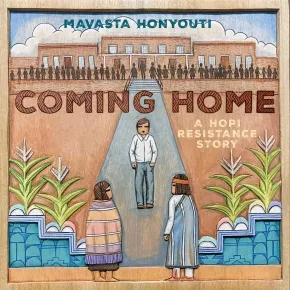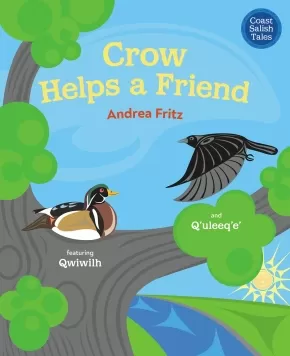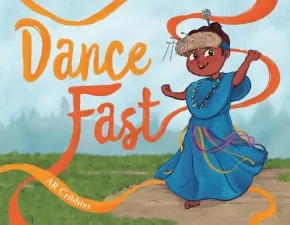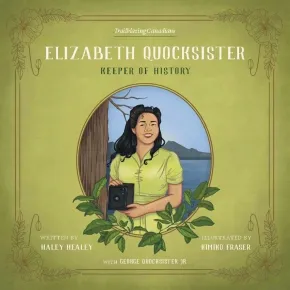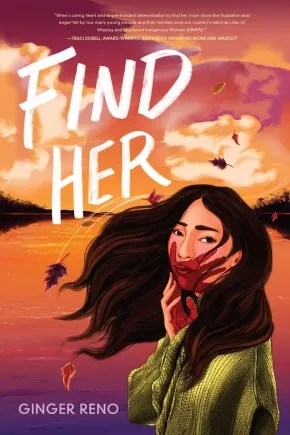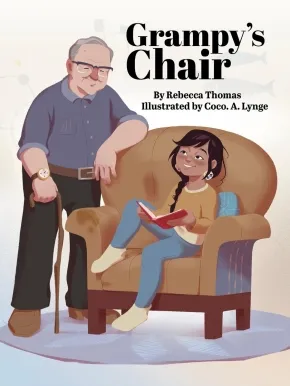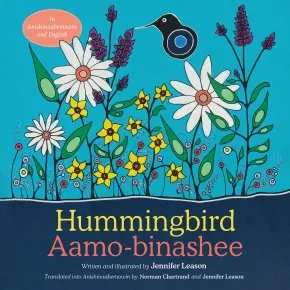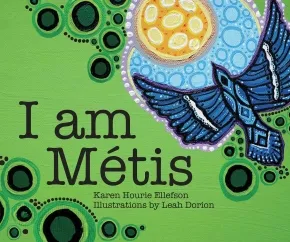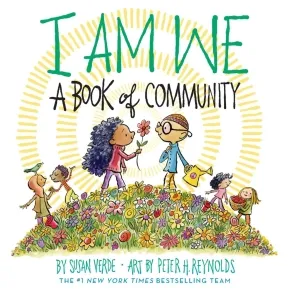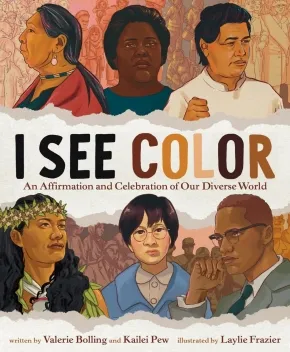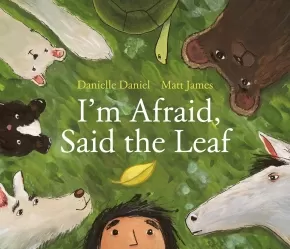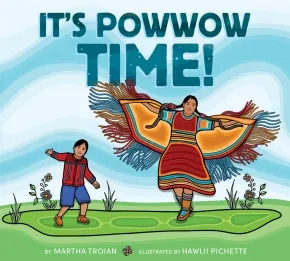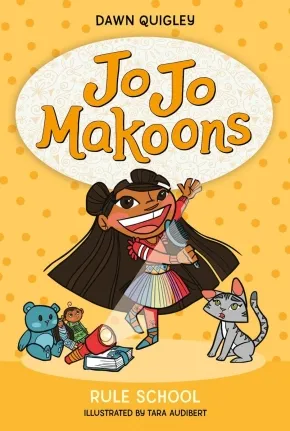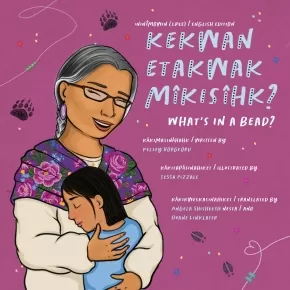
Healing and Wellness
106
-
120
of
636 Results;
Sort By
Go To
of 43
Coming Home: A Hopi Resistance Story
$28.99
Artists:
Format:
Hardcover
ISBN / Barcode: 9781646144570
Synopsis:
Synopsis:
From master Hopi woodcarver Mavasta Honyouti, the story of his grandfather’s experience at a residential boarding school and how he returned home to pass their traditions down to future generations.
When Mavasta Honyouti was a boy he would go with his grandfather to their cornfield, watching him nurture every plant. During breaks, his grandfather would take out a piece of paako root and use his pocketknife to whittle away. He made beautiful carvings that Mavasta would later learn to do himself.
But Mavasta would often wonder: what was his kwa’a like when he was a boy? And one day, he heard the story.
Mavasta’s grandfather, like many Native American children across the country in the late 19th and early 20th century, was forced to leave his Hopi reservation as a child and go to a residential boarding school far away. There, the government cut his hair, punished him for speaking his native language, and gave him a new name. But Mavasta's grandfather never forgot who he was – or where he came from – and he tried to escape again and again. Finally, he made it back to their reservation.
In later years, Mavasta’s kwa’a chose a simple life, taking great care of his family just like he took great care of his plants. His son and later his grandson became acclaimed Hopi katsina woodcarvers, just like him. Coming Home: A Hopi Resistance Story is a deeply personal book – written in both English and Hopi – that features sixteen stunning original painted wood carvings. It is an unforgettable testament to one man rising above a painful piece of history to keep the light of his family and culture alive.
Educator Information
Recommended for ages 4 to 8.
Dual-language: English and Hopi.
Additional Information
48 pages | 9.00" x 9.20" | Hardcover
Crow Helps a Friend
$21.95
Artists:
Format:
Hardcover
Text Content Territories:
Indigenous Canadian; First Nations; Salish; Coast Salish; Lyackson ;
ISBN / Barcode: 9781459836242
Synopsis:
Synopsis:
Mistakes can be an opportunity for growth.
Indigenous artist and storyteller Andrea Fritz tells the tale of a wood duck and a crow who turn a mistake into an opportunity for friendship and growth.
Qwiwilh the wood duck is preparing to nest in his favorite tree when Q'uleeq'e' the crow invites him to play in the tall branches. They jump higher and higher up the tree until they accidentally break the branches and come crashing down into the stream below. After a daring rescue, Qwiwilh sadly realizes his nesting spot is gone, and Q'uleeq'e' decides to make things right for her new friend.
In this original story set in Coast Salish Traditional Territory, author and artist Andrea Fritz uses Indigenous storytelling techniques and art to share the culture and language of the Hul’q’umi’num’-speaking Peoples. This is the second book in the Coast Salish Tales, following Otter Doesn't Know.
Educator & Series Information
Recommended for ages 6 to 8.
This is the second book in the Coast Salish Tales series, following Otter Doesn't Know.
Recommended in the Indigenous Books for Schools catalogue as a valuable resource for English Language Arts and Art in K to Grade 3.
Themes: Animals, Art, Community, Connectedness to Nature, Respect, Language, Relationships, Traditional Knowledge
Additional Information
32 pages | 8.75" x 10.75" | Hardcover
Dad, I Miss You
$22.95
Artists:
Format:
Hardcover
Text Content Territories:
Indigenous Canadian; Inuit;
ISBN / Barcode: 9781772274820
Synopsis:
Synopsis:
Told in the voice of a boy and his father by turns, this book takes a thoughtful and heartfelt look at the emotional toll of a child being taken from their family and community to attend residential school.
While the child’s internal monologue expresses his fear, confusion, and loss, the father’s monologue conveys his own sadness, fears, and hopes for the future of his child. The narrative gives voice to the things left unsaid between a parent and child experiencing this heart-rending separation. Upon his return to his community, when father and son are reunited, they must start the long process of reconnection.
Based on the author’s family history of residential school separation, this book provides a unique perspective on the difficult cycle of loss, reconnection, and regaining hope for the future.
Educator Information
Recommended for ages 9 to 12.
Additional Infroamtion
40 pages | 9.00" x 8.00" | Hardcover
Dance Fast
$24.99
Artists:
Text Content Territories:
Indigenous American; Native American; Pomo;
ISBN / Barcode: 9780316539388
Synopsis:
Synopsis:
This charming and humorous book celebrates Pomo traditions and explores creative frustration, perfectionism, and the value in embracing your mistakes.
I want to dance!
Bizzy can't wait to dance with all her friends and family at the summer gathering this year! But first, she must make the perfect regalia. It's tricky work, even with a grown-up's help, and her high expectations come crashing down in a flurry of torn fabric, loose beads, and tears. With support from her mom, grandma, and little brother, can Bizzy learn to see past the flaws, finish her work, and remember what's really important?
AR Cribbins celebrates Pomo traditions in this charming and humorous tale about creativity and perfectionism.
Reviews
“The illustrations are bright and energetic and mirror Bizzy’s emotional undulations.”—Booklist
“The many emotions of all the characters are wonderfully encapsulated in the imagery through collage and comic book–style cartoons…. This book teaches in a safe, digestible story that accidents happen, emotions will rise, but having support can help repair the situation smoother than attempting to fix it with those immediate big feelings.”—School & Library Journal
“A vibrantly illustrated life lesson.”—Kirkus
Educator Information
Recommended for ages 4 to 8.
Additional Information
40 pages | 8.80" x 11.40" | Hardcover
Elizabeth Quocksister: Keeper of History (PB)
$12.95
Artists:
Format:
Paperback
Text Content Territories:
Indigenous Canadian; First Nations; Kwakwaka'wakw (Kwakiutl); Da'naxda'xw Awaetlala;
ISBN / Barcode: 9781772034851
Synopsis:
Synopsis:
The uplifting true story of Elizabeth Quocksister, a strong Indigenous woman and community leader, who dedicated her life to protecting her language and cultural traditions.
Elizabeth Quocksister (1925–81) had many roles in her life. She was a cultural teacher, a community leader, a dancer, a nurse, a photographer, a residential school survivor, and a mother of ten. Born on the Da’naxda’xw Nation on Knight Inlet on the central coast of British Columbia, Elizabeth spoke fluent Kwak’wala and proudly celebrated her Kwakwaka’wakw culture at a time when the Canadian government actively discouraged Indigenous traditions and the speaking of Indigenous languages. She cared for community members in need and saved many children from the horrors of residential school. She chronicled the daily lives, important events, and changing times of her community through photography—preserving her people’s history and culture for future generations. This inspiring picture book is a beautiful tribute to a proud Indigenous woman whose name deserves to be well-known throughout her community and beyond.
Educator Information
Recommended for ages 4 to 8.
Additional Information
32 pages | 9.00" x 9.00" | Paperback
Find Her
$24.49
Format:
Hardcover
Text Content Territories:
Indigenous American; Native American; Cherokee;
ISBN / Barcode: 9780823454808
Synopsis:
Synopsis:
Five years, three months, and twelve days.
That’s how long Wren’s mother has been missing.
In dreams, Wren can see her again: her eyes, her hair, her smile. She can even hear her laugh. Her mother, one of hundreds of Native Americans considered missing or murdered in Oklahoma. Sometimes it seems like Wren and her grandmother are the only people still looking. Even more frustrating, Wren's overprotective father won't talk about it.
Wren refuses to give up, though. And an opportunity to find lost pets seems like a real way to hone her detective skills. But everything changes when one of the missing pets is found badly hurt. Soon, there are others.
With help from an unlikely friend, Wren vows to unmask whoever is behind the animal abuse. If she can do this, maybe she can do the same for her mother's case. She'll just have to keep it secret from her father who will certainly put an end to all her sleuthing if he finds out.
Find Her explores the crisis of missing Indigenous women from the perspective of a sensitive young Cherokee girl who yearns to find her mother, while also navigating a chilling town mystery, a new friendship, and a family in need of healing.
Awards
- A Junior Library Guild Gold Standard Selection
Reviews
"Via crisp prose, Reno meshes plot threads involving abandoned shelter pets and a mystery surrounding a locator on Wren’s grandmother’s keys, which emphasize the futility Wren feels in trying to find someone who seems unreachable."—Publishers Weekly, Starred Review
"A dramatic and captivating call for attention."—Kirkus Reviews
"Cherokee writer Reno crafts a powerful debut centering an important issue affecting Indigenous women and families; a strong purchase for all middle schools."—School Library Journal
"Wren's caring heart and single-minded determination to find her mom shows the frustration and anger felt by too many young people and their families over our country's national crisis of Missing and Murdered Indigenous Women (MMIW)."—Traci Sorell, award-winning author of Indian No More and Mascot
"Find Her is a compelling novel written with sensitivity by gifted Cherokee writer Ginger Reno. In this contemporary story of Wren and her family in Cherokee Nation, Reno addresses the injustice of so many missing and murdered indigenous relatives and the heartbreak and hope that comes with not knowing. Find a place on your shelves for Find Her."—Andrea L. Rogers, award-winning author of Man Made Monsters
Educator Information
Recommended for ages 10+
Additional Information
|
Grampy's Chair
$23.99
Artists:
Format:
Hardcover
Text Content Territories:
Indigenous Canadian; First Nations; Mi'kmaq;
ISBN / Barcode: 9781773219189
Synopsis:
Synopsis:
A heartwarming story about lifelong love and loss told from the perspective of a grandfather’s favorite chair.
Grampy’s chair sits in the middle of his living room and always keeps an eye on My Love. The Chair is the perfect spot for My Love to learn to read, to play games with her friends, and The Chair is always extra soft when My Love is sick. As My Love grows up, The Chair sees Grampy grow older and My Love must care for him. One day Grampy is gone, and The Chair is moved to a space with only a few things it recognizes (and a few spiders too). Will it see My Love again?
In this poignant story inspired by her own grandfather and his chair, Rebecca Thomas invites readers of all ages to explore love, grief, and the important moments in life that take place in our favorite spots. With lively illustrations from Coco A. Lynge and featuring a heartfelt author’s note, Grampy's Chair takes the readers through loss, and how we can be found again by the ones we love.
Reviews
"Although the author is Mi’kmaw, the story does not directly reference Mi’kmaw culture. Instead, it draws on her personal experience in a mixed-heritage family and offers a heartfelt reflection on the loss of a grandparent. Thomas’s poetic voice invites readers to reflect on someone special and the emotional meaning attached to everyday objects, such as a chair, photograph, or place. Lynge’s gentle illustrations enrich the story’s emotional tone, helping readers connect with the emotions expressed in the story. Suitable for K–3 classrooms, this picture book supports curricular connections in English Language Arts and Social Studies. In ELA, it invites exploration of perspective, voice, symbolism, and story structure. In Social Studies, it can spark discussion around family diversity, intergenerational knowledge, and memory." - Bonny-Lynn D., Elementary School Teacher, Indigenous Books for Schools
Educator Information
Recommended for ages 4 to 7.
This book is included in the Indigenous Books for Schools database from the Association of Book Publishers of BC. It is recommended for K to 3 classrooms for English Language Arts and Social Studies.
Additional Information
36 pages | 7.65" x 10.25" | Hardcover
Hummingbird / Aamo-binashee
$21.95
Artists:
Format:
Hardcover
Text Content Territories:
Indigenous Canadian; First Nations; Anishinaabeg;
ISBN / Barcode: 9781459837140
Synopsis:
Synopsis:
You never walk alone.
Remember the hummingbird's teachings. Remember you are loved.
Kokum warned us to watch out for one another. If we weren't careful, Windigo would eat us. But one night, alone in the darkness, I felt its breath on my neck. Windigo's lies crept into my heart, and I believed them. When we lose connection with others, we lose ourselves, and Windigo's darkness grows and spreads.
In this deeply emotional and beautifully illustrated picture book, the ancestors send a hummingbird to a child lost in Windigo’s darkness. Its teachings of resilience, love and connection bring the child home and remind us that our ancestors are always watching and can help us find our way if we only ask.
This bilingual book includes full text in both English and Anishinaabemowin.
Educator Information
Recommended for ages 6 to 8.
Fountas & Pinnell Text Level Gradient: U
Lexile measure: 520L
Guided Reading Level: U
Dual-Language: English and Anishinaabemowin
There are many dialects fo Anishinaabemowin, and this book presents a phonetic spelling of the language as learned by the author and co-translator in Duck Bay, northeastern Manitoba. This dialect is sometimes referred to as Western Ojibwa, Nakawemowin, Saulteaux or Plains Ojibwa. Translated by Norman Chartrand and Jennifer Leason.
This beautifully illustrated story expresses hope, healing and reclamation of Indigenous strength and identity in the wake of oppression and trauma.
This book is included in the Indigenous Books for Schools database from the Association of Book Publishers of BC. It is recommended for Grades 1 to 3 for Art, English Language Arts, and Social Studies.
Additional Information
32 pages | 8.00" x 8.00" | Hardcover
I Am Metis
$23.95
Artists:
Format:
Hardcover
Text Content Territories:
Indigenous Canadian; Métis;
ISBN / Barcode: 9781554556212
Synopsis:
Synopsis:
"Who are you?", whispers the voice in the wind. "You are Métis." What does this strange word mean? A young girl watches her father to understand the unfamiliar label. Through a series of vignettes centred around her dad, the child interacts with her riverlot surroundings and delights in her Métis way of life.
Discover the joy and vibrancy of the Métis culture from a child's perspective. Feel the author's pride in her Métis identity, and her love for her father, as she relives childhood memories.
Educator Information
Recommended for ages 6 to 9.
Caution: The word "Indian" is used in this work when the author recounts a memory from her childhood.
Additional Information
32 pages | 10.00" x 8.00" | Hardcover
I Am We: A Book of Community
$19.99
Artists:
Format:
Hardcover
ISBN / Barcode: 9781419771941
Synopsis:
Synopsis:
Cultivate connection and kindness in author Susan Verde’s and Peter H. Reynolds’s I Am We.
Connected is what we are:
part of a world-wide community,
diverse and magnificent, kind and accepting, supportive and present.
All of us important, none of us alone.
Sometimes we may wonder, how does caring for ourselves help anyone else? But then we realize that the better we feel inside, the more we can be there for others—our friends, families, and communities. We are part of something bigger than ourselves, and when we each turn our goodness and compassion outward, we can create, learn, and love.
Whether it’s listening to a friend, welcoming newcomers with open arms, or standing up against injustice, I Am We shows us what true community looks like—and the amazing things that can happen when we come together.
Inside you’ll also find exercises for building community.
Reviews
"Verde’s contemplative text sets a tone at once musing and affirming, while Reynolds’ cartoon illustrations visualize the concepts in practical ways, grounding readers in colorful and emotive images. A genuine call to action paired with sincere reflection." — Kirkus Reviews
Educator Information
Recommended for ages 4 to 8.
Additional Information
32 pages | 8.00" x 8.00" | Hardcover
I See Color
$24.99
Artists:
Format:
Hardcover
Text Content Territories:
Indigenous American | Native American|
ISBN / Barcode: 9780063234260
Synopsis:
Synopsis:
For fans of The Undefeated by Kwame Alexander and Little Leaders by Vashti Harrison, I See Color is a picture book that affirms people of color—of all shades—by celebrating their achievements and contributions to society.
Highlighting people such as Madonna Thunder Hawk, Basemah Atweh, and Dr. Martin Luther King Jr., incredible leaders are honored, seen, and heard on every page.
Part ode to an array of beautiful skin tones and part introduction to change-makers in history, this book is a perfect conversation starter for readers everywhere.
Reviews
"The love and appreciation of color shines through this vibrant retrospective on activism, courage, and resistance." — Kirkus Reviews (starred review)
"An eye-opening album to be read, cherished, used as a cornerstone for study, or shared across curricula." — School Library Journal (starred review)
"[T]his high-level work underscores “all that can be achieved together.” — Publishers Weekly
Educator Information
Recommended for ages 4 to 8.
Includes some Indigenous content.
Additional Information
40 pages | 9.00" x 11.00" | Hardcover
I'm Afraid, Said the Leaf
$24.99
Artists:
Format:
Hardcover
ISBN / Barcode: 9781774880708
Synopsis:
Synopsis:
A touching, playful exploration of empathy and interdependency from an acclaimed author and illustrator.
I’m afraid, Said the leaf. / You’re not alone, Said the tree. But who will comfort a nervous bird, a lonely crab, a lost wolf? How can a horse find warmth, a snail some cheer, a child some rest? Through a series of amusing and soothing exchanges, this deceptively simple and profound picture book depicts different pairings to celebrate interconnectedness and underlines the importance of caring for every living organism to ensure a strong and healthy natural world.
I’m Afraid, Said the Leaf invites young readers to understand that we all need each other for support and survival — and that we're all stronger together.
Reviews
"Every worry is addressed and every need is met in this eloquent portrait of the interconnectedness of the living world." —STARRED REVIEW, Publishers Weekly
"[T]he art renders the tale truly universal." —Kirkus Reviews
"[A] good picture book about kindness and how all species are interconnected and depend on each other "to exist and thrive in harmony."" —Metroland
Educator Information
Recommended for ages 3 to 7.
Additional Information
64 pages | 10.88" x 9.31" | Hardcover
It's Powwow Time!
$24.99
Artists:
Format:
Hardcover
Text Content Territories:
Indigenous Canadian; First Nations;
ISBN / Barcode: 9780063116665
Synopsis:
Synopsis:
This lyrical and joyful picture book celebrates new experiences and community traditions when a young boy learns to dance at his first powwow. It’s Powwow Time! is for readers of Cynthia Leitich Smith’s Jingle Dancer and Oge Mora’s Thank You, Omu!
Bineshii is looking forward to his first powwow. He wakes up and travels with his mother to the community event. He eats bannock and drinks strawberry juice as he watches the dancers perform. And ever so slowly, Bineshii works his way from the edge of the circle watching the dancers to inside the circle itself, dancing and celebrating with everyone else.
Award-winning journalist Martha Troian’s child-centered text and Hawlii Pichette’s action-packed illustrations build excitement on the page as Bineshii’s curiosity and confidence grows. It’s Powwow Time! explores the rewards of being open to new experiences while also serving as a beautiful and informative introduction to a First Nations powwow.
Educator Information
Recommended for ages 4 to 8.
Keywords/Themes: Early Years (Body and the Senses); Powwows; Self-Esteem; Dance; New Experiences.
This book is a wonderful read-aloud.
Includes an author's note about powwows.
Additional Information
32 pages | 10.00" x 9.00"
Jo Jo Makoons: Rule School
$8.50
Format:
Paperback
Text Content Territories:
Indigenous American; Native American; Anishinaabeg; Ojibwe (Chippewa);
ISBN / Barcode: 9780063315563
Synopsis:
Synopsis:
It is good to follow the rules. But there are just so many! In this fourth book in the beloved Jo Jo Makoons chapter book series, Jo Jo’s talents may not quite include following her substitute teacher’s rules…
Jo Jo and her classmates are excited that the Elders’ Tribal Center has changed the rules for the talent show to invite the whole tribe to perform. But the rules have also changed in Jo Jo’s classroom, where instead of their teacher, they have a substitute. Since Jo Jo has a knack for being helpful, she puts her mind to helping her classmates decide on their talents—but can she manage to follow the substitute teacher’s rules?
Even if no one else quite understands Jo Jo’s own rules (like that saying “please” makes words softer and fluffier to hear and that square foods are too pointy to be yummy), her undeniable talents for celebrating, curiosity, and class keep her happily hop-skipping in step with her Ojibwe community.
Educator Information
Recommended for ages 6 to 10.
This is the fourth book in the Jo Jo Makoons series.
The first book in this acclaimed chapter book series was an American Indian Youth Literature Award Honor Book; a best book of the year from Kirkus Reviews, School Library Journal, American Indians in Children's Literature, and the Chicago Public Library; a Charlotte Huck Award Honor Book; and a Cooperative Children's Book Center CCBC Choices selection.
Additional Information
96 pages | 5.12" x 7.62" | Paperback
kekwan etakwak mîkisîhk / What’s in a Bead?
$21.95
Artists:
Format:
Hardcover
Text Content Territories:
Indigenous Canadian; First Nations; Anishinaabeg; Cree (Nehiyawak);
ISBN / Barcode: 9781772603675
Synopsis:
Synopsis:
There are many stories in a bead. We must listen to the stories they tell us.
Tessa loves how her grandmother always smells of campfire stories. Mom says it’s because Kohkom spends her days sewing beautiful beads onto smoked hides. Inspired, Tessa asks Kohkom to teach her beading, but first she must listen and learn about the many stories held in a bead.
A celebration of Cree craftsmanship, language, and learning. The loving exchange of knowledge between Tessa and her Kohkom will be familiar to many children. Readers will learn that different Indigenous communities have different beadwork techniques, and that this traditional art form is alive and thriving today.
Reviews
"The story is a beautiful look into the importance of beading in our communities and the ways that this art practice ties us together as families and communities." — Nancy Cooper, First Nations Consultant for the Southern Ontario Library Services and coordinator for First Nation Communities Read
Educator Information
Recommended for ages 6 to 8.
This dual language edition contains the story in both Ininîmowin (Cree, N-dialect) and English.
Translators: Duane Linklater & Angela Shisheesh
Duane is Omaskêko Ininiwak and currently lives in North Bay, Ontario. He earned a Master of Fine Arts from Bard College and a Bachelor of Native Studies with a focus in Cree language from the University of Alberta. Linklater is lifelong learner of the Cree language and credits the many Elders, including his kohkom Agnes Hunter, for teaching and sharing the language.
Angela is a Cree translator at Ojibway & Cree Cultural Centre based in Timmins, Ontario
An English-only version is available: What's in a Bead?
This book is available in French: Le pouvoir d'une perle
Additional Information
24 pages | 8.50" x 8.50" | Hardcover
Sort By
Go To
of 43

